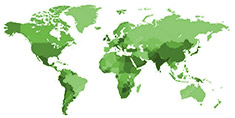Growing and Sowing Poppy

The poppy is a plant that belongs to the Papaveraceae family. The most well-known is the red poppy (Papaver rhoeas), which often blooms in roadsides and fields. It is a herbaceous, mostly annual flower with striking blossoms. These flowers have thin, brightly coloured petals and are usually red. There are also other colours. They get their name because they grow on long stems, making it seem as if the petals clap in the wind. After flowering, beautiful seed pods remain, which are often dried for use in dried flower arrangements. These seed pods contain hundreds of tiny seeds.
Sowing and growing Poppy
Everyone knows this plant. You often see them along roadsides and in fields, and because of their striking colour, often red, their height, and elegance, they are real eye-catchers. The poppy, also called Papaver. Some species of poppy have edible seeds, better known as poppy seeds. But be careful, not all poppy seeds are edible; only those from Papaver somniferum are safe to eat. It is not recommended to harvest poppy seeds yourself.
Sowing Poppy Seeds
Always sow poppies in their final location, as they do not like being transplanted. You can sow from March to May for flowering in the same year, or in the autumn from September to October for flowering in the following season. Sow them in a sunny spot in the garden. Loosen the soil and remove any weeds, then scatter the seeds. Do not cover the seeds with too much soil, as they are light germinators.
Position and soil for the Poppy
The ideal location for poppies is a sunny, sheltered spot in the garden. The soil should be well-draining and poor in nutrients. Nutrient-rich soil encourages a lot of leaf growth but fewer flowers. To prevent the flowers from breaking, support may be necessary.
How to care for your Poppy plants
Poppies require very little care. Water them only during extreme drought. Fertilizing is absolutely not necessary.
Are Poppy plants bee and/or butterfly friendly?
Although poppies contain little nectar, they are still insect-friendly. This is partly because they produce a lot of pollen, which attracts bees and hoverflies. Since the flowers have an open structure, they are easily accessible to insects. Moreover, after flowering, the seed pods provide shelter and hiding places for insects and spiders throughout the winter.
Poppy in the vegetable garden
Although they are considered inedible, poppies are certainly a beautiful addition to a vegetable garden. For example, sow them along the edges of the beds. The flowers attract pollinators, and by leaving them standing after flowering, they return organic material to the soil. And not least, they give your garden a beautiful, wild appearance.
Is Poppy edible and/or medicinal?
This depends on the species. Only the seeds of Papaver somniferum are edible. They are also known as poppy seeds. By the way, poppies are not toxic, and the petals are sometimes used as garnish. This is purely for decoration, as they have no flavor. It is claimed that poppies have medicinal properties, such as pain relief.
Please note, we at Dutch Garden Seeds do not give medical advice. Always ask a professional if and how the plant can be used medicinally.
Poppy Seeds in our collection
We have several varieties of poppies in our range.
Tips for sowing poppy seeds
- Prune the plant after it has finished blooming if you want to prevent it from self-seeding.
- The spent flowers provide a welcome shelter for insects during the winter months.



